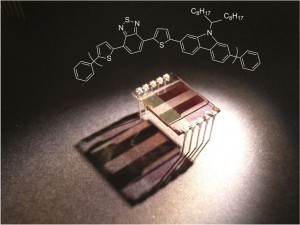
The study was published earlier this week in the Journal Advanced Energy Materials and it could hail new solar cell manufacturing techniques and developments in renewable solar energy.
The method has an economic advantage as plastic (polymer) solar cells are much cheaper to produce than conventional silicon solar cells and have the potential to be produced in large quantities.
The study showed that when complex mixtures of molecules in solution are spread onto a surface, like varnishing a table-top, the different molecules separate to the top and bottom of the layer in a way that maximises the efficiency of the resulting solar cell.
The research was carried out by scientists from the the Universities of Sheffield and Cambridge (UK), who used the ISIS Neutron Source and Diamond Light Source at STFC Rutherford Appleton Laboratory in Oxfordshire.
“Our results give important insights into how ultra-cheap solar energy panels for domestic and industrial use can be manufactured on a large scale. Rather than using complex and expensive fabrication methods to create a specific semiconductor nanostructure, high volume printing could be used to produce nano-scale (60 nano-meters) films of solar cells that are over a thousand times thinner than the width of a human hair. These films could then be used to make cost-effective, light and easily transportable plastic solar cell devices such as solar panels,” said Dr Andrew Parnell of the University of Sheffield.
Dr. Robert Dalgliesh, one of the ISIS scientists involved in the work, added that this work “clearly illustrates the importance of the combined use of neutron and X-ray scattering sources such as ISIS and Diamond in solving modern challenges for society. Using neutron beams at ISIS and Diamond’s bright X-rays, we were able to probe the internal structure and properties of the solar cell materials non-destructively. By studying the layers in the materials which convert sunlight into electricity, we are learning how different processing steps change the overall efficiency and affect the overall polymer solar cell performance.”
The research was funded with a grant from the Engineering and Physical Sciences Research Council (EPSRC). The collaboration has just been allocated a new grant to carry out further studies into the structure and function of polymer solar cell materials, as well as examining new materials and innovative processes for high volume manufacture and future commercialization.
“Over the next fifty years society is going to need to supply the growing energy demands of the world’s population without using fossil fuels, and the only renewable energy source that can do this is the sun”, said Professor Richard Jones of the University of Sheffield. “In a couple of hours enough energy from sunlight falls on the Earth to satisfy the energy needs of the Earth for a whole year, but we need to be able to harness this on a much bigger scale than we can do now. Cheap and efficient polymer solar cells that can cover huge areas could help move us into a new age of renewable energy.”
You should follow us here.





